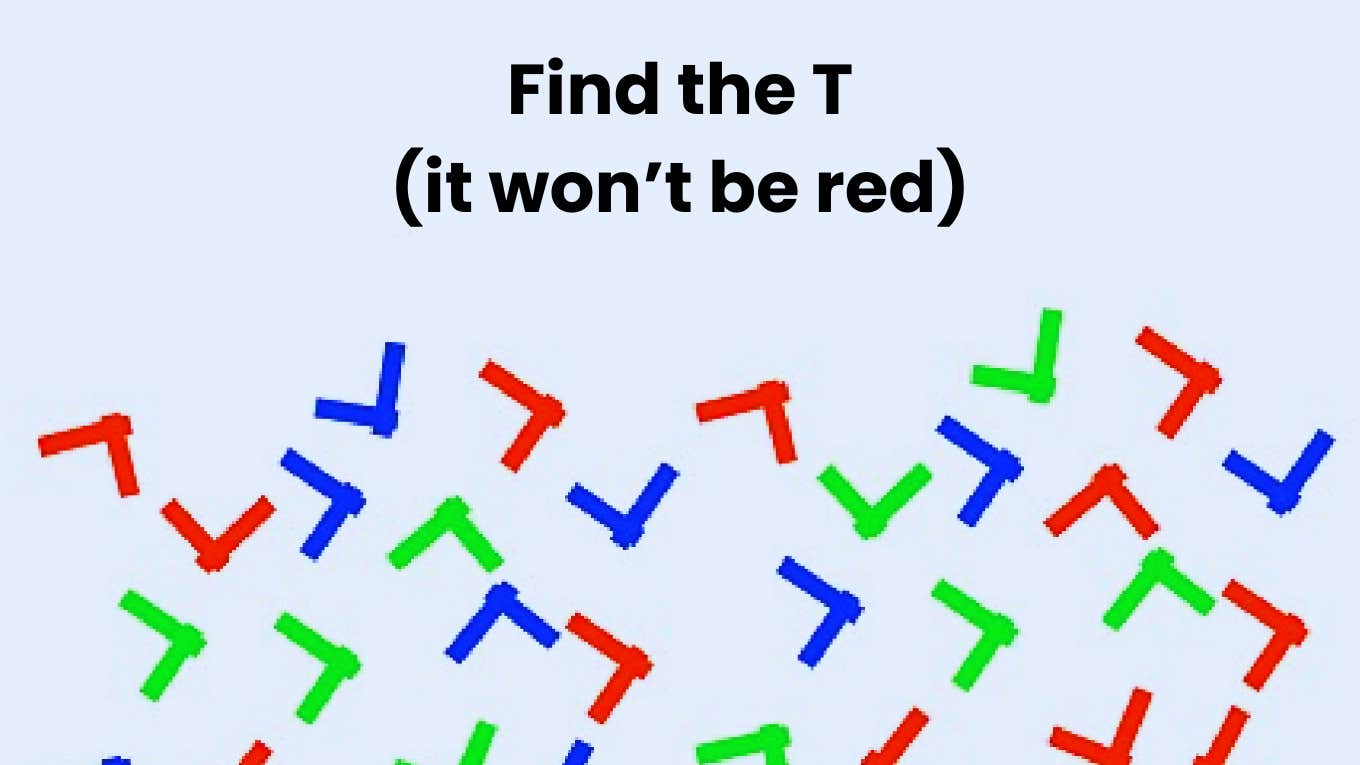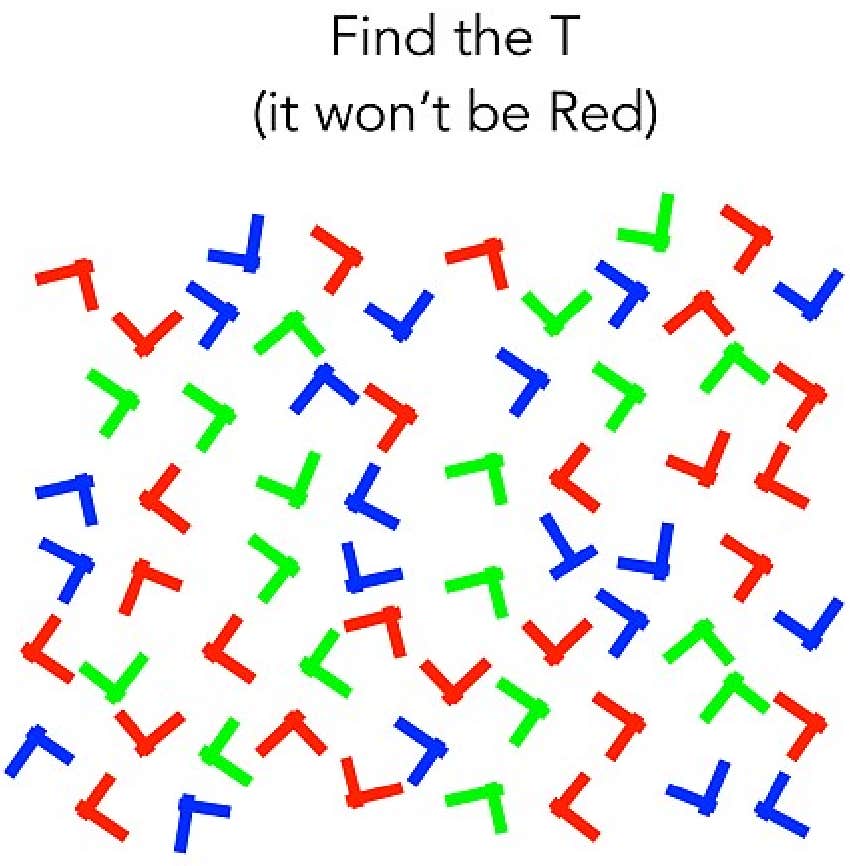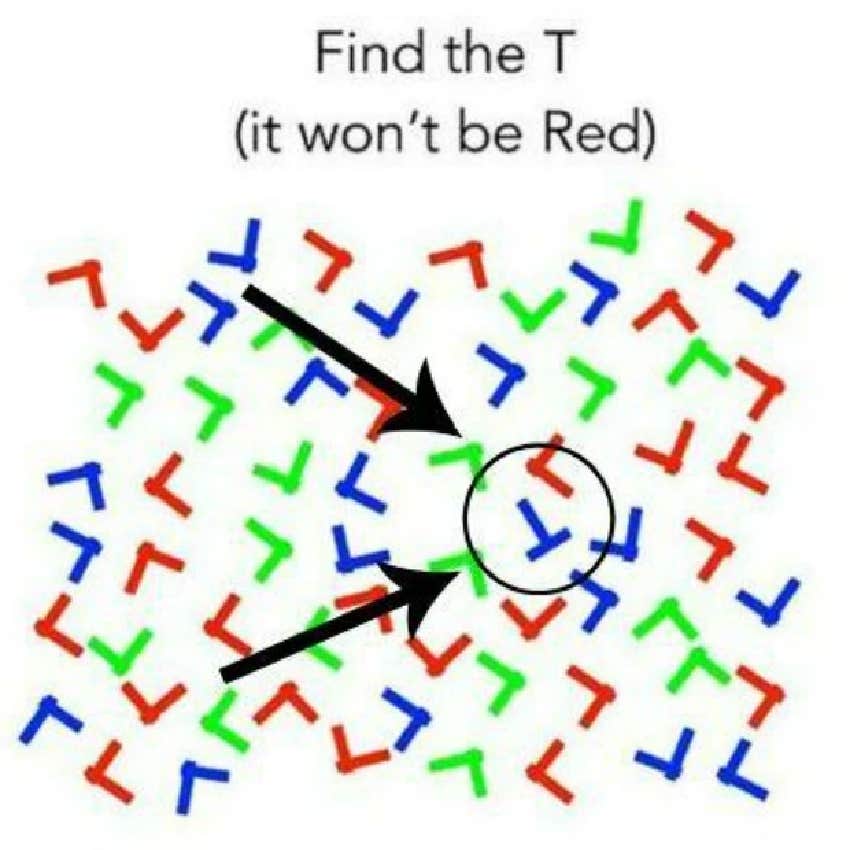People Who Can Find The 'T' In This Brain IQ Puzzle Test Within 10 Seconds Are Gifted
Researchers at John's Hopkins University found that knowing what not to look for is a key sign of intelligence.
 Johns Hopkins University
Johns Hopkins University Do you have amazing focus and concentration? Are you always able to find Waldo or any hidden picture? Here's a quick puzzle test developed by John's Hopkins University that can help you find out how gifted you really are at processing information in only 10 seconds.
Visual IQ tests, which typically involve finding items hidden in pictures or scenes, are not only enjoyable, but they can also be used as tools for relaxation and mental stimulation. According to a study from the Nanyang Technological University in Singapore, playing hidden object games can help keep your mind sharp. They require the person to focus on details, remember where objects are located, and think strategically.
Take a look at the gifted personality test below and try to find the 'T' hidden amongst the 'L's.
We'll even give you a hint to make it really easy for you: The 'T' won't be red. If you can find the letter in under 10 seconds, then you'll know that you're gifted (and truly special).
 Johns Hopkins University
Johns Hopkins University
How did you do? Are you all set for super special genius camp?
And if you still haven't found the T, that's OK. Here's the answer key:
 Johns Hopkins University
Johns Hopkins University
This particular test was created by a team at Johns Hopkins University in Boston, where researchers in the Science of Learning Institute found that knowing what not to look for can be extremely helpful.
Results of this study, Taming the White Bear: Initial Costs and Eventual Benefits of Distractor Inhibition, demonstrated that when people are given time to learn what's possible to ignore before they begin, they're able to search faster and more efficiently.
"Individuals who explicitly ignore distracting information improve their visual search performance, a critical skill for professional searchers, like radiologists and airport baggage screeners," said lead author Corbin A. Cunningham. "This work has the potential to help occupations that rely on visual search by informing future training programs."
Over the course of two experiments, participants were asked to search for certain letters on a computer screen.
They had to find either a capital 'B' or an 'F' among other letters of assorted colors. Sometimes the participants were told the 'B' or 'F' wouldn't be a certain color, and other times they weren't given any color hints.
When the participants were told one color to consistently ignore, their reaction time slowed down at first. But after some time and practice, they found the target letters more quickly than the participants who weren't given a color to eliminate.
In fact, the study found that the more information the participants were able to ignore, the faster they found the target. This shows that the ability to ignore distractions is a key part of the ability to pay attention, the researchers said.
"Attention is usually thought of as something that enhances the processing of important objects in the world," said study co-author Howard Egeth, a professor of psychology and brain sciences at Johns Hopkins. "This study ... highlights the importance of active suppression of those competing stimuli. It's what I think of as the dark side of attention."
Christine Schoenwald is a writer whose articles have appeared in The Los Angeles Times, Salon, Woman's Day, Purple Clover, Bustle. She is a regular contributor to Ravishly and YourTango.
